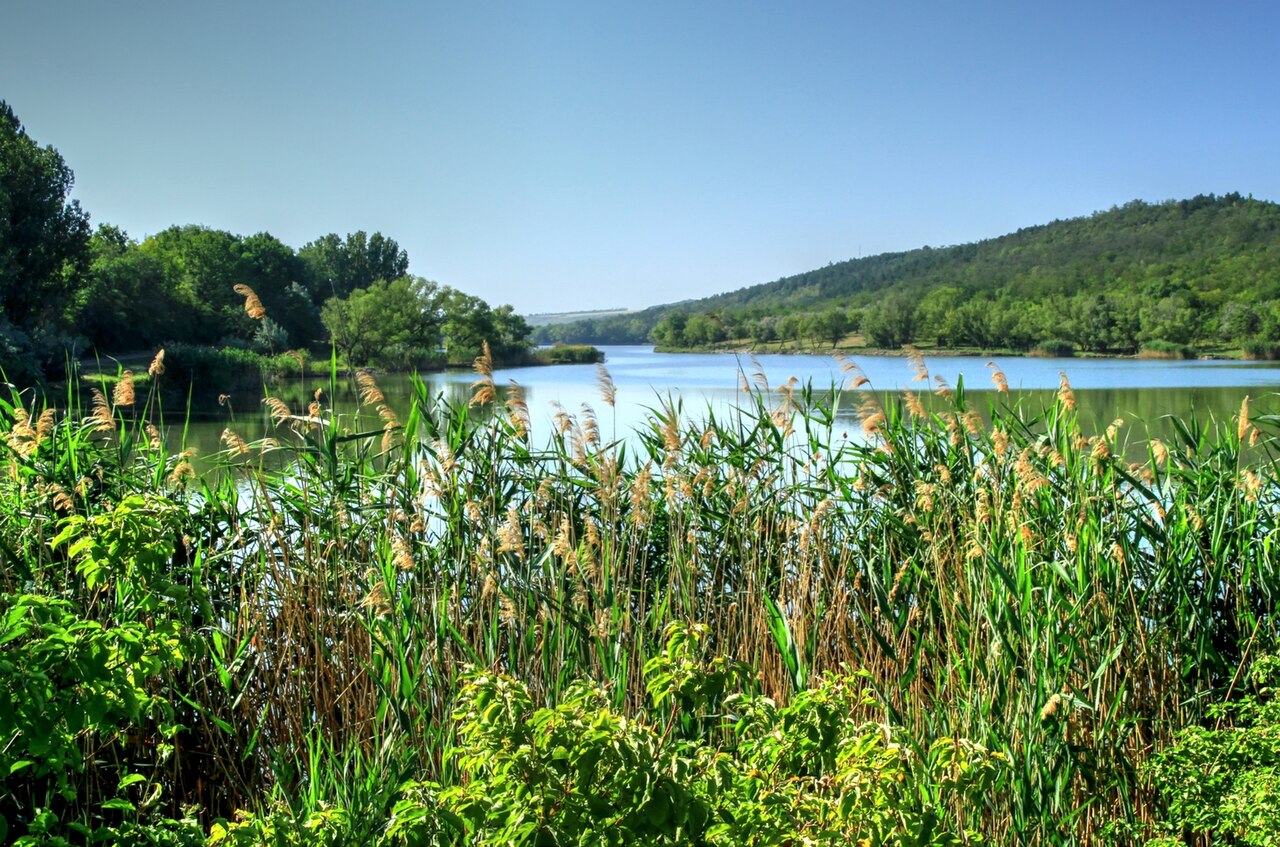
Discovering Moldova with #MOLDPRES: Iagorlîc Reserve, true biodiversity gem on left bank of Dniester
Iagorlîc is a scientific reserve in the central-eastern part of Moldova, placed at the mouth of the Iagorlîc River, on the left bank of the Dniester (Transnistria).
The reserve was established in 1988. Presently, the area of the reserve is 8.77 km2.
The reserve includes water and terrestrial ecological systems, where conditions have been created for the reproduction of animals and plants. It is located at the mouth of the Iagorlîc River, on the left bank of the Dniester and was created for biodiversity’s conservation.
The reserve was organized to preserve and study the ecological conditions characteristic of the water basins near the Dniester.
The value of the reserve
The greatest value of the Iagorlîc natural reserve is that it contains many rare and endangered species of plants, which enter unique phytocenoses located on the calcareous steppe slopes of the Iagorlîc, dry Iagorlîc River and some large streams.
The water basins of the natural reserve are also favored by various representatives of the fauna. They are most significant for various species of fish that use them for spawning. The ichthyo-fauna includes 23 species of fish. There are 29 species of mammals, 121 species of birds from 14 orders. Rare species include the European ground squirrel (Spermophilus citellus), the stoat, the hazel snake, the yellow-bellied snake, pond turtle. Among the birds found in the reserve area, there are the osprey (Pandion haliaetus) and the northern harrier (Circus cyaneus), the latter noted only during migration, species included in the Red Book of Moldova. The ornitho-fauna of the reserve consists of 167 species of birds, 91 of which nest here. Fifteen species of birds recorded in the natural reserve are included in the Red Book of Moldova (2001), 12 species in the Red Book of Ukraine (1994).
The reserve includes both water and terrestrial boundaries, where optimal conditions for the breeding of animals and plants have been created. The terrestrial area of the reserve is occupied by steppe plants including feather grass, fescue, and plantain. The forests occupy not very large areas and are represented by isolated copses of pedunculate and downy oak. The floodplain vegetation of the Iagorlîc River also occupies a limited area and includes such plants as reed, plantain and sea buckthorn. The underwater vegetation is well developed, including water soldier, reed, bulrush and pondweed.
On the territory of the reserve, 719 species of plants are recorded, of which 50 species are rare. Twenty tine species of animals live in the reserve. They are not "endangered," as in other reserves, but are of interest: roe deer, wild boars, stone martens, foxes and raccoon dogs. However, there are also rare species among them, such as the European ground squirrel and the stoat. Among the rare reptiles, there are the hazel snake, the bad snake (Aesculapian snake) and the pond turtle. The diversity of reserve habitats explains the large number of birds, totaling 121 species here. From the species included in the Red Book, the swan nests here, and during migration, the osprey and egret can be found.
For a nature walk on an ecological trail, tourists should know that the trail is narrow and occasionally difficult and clothing and footwear should be comfortable and suitable for the season. They should also have insect repellent spray with them.
Correspondent: Lilia Grubii
Discover Moldova with #MOLDPRES: Wetlands - natural heritage assets, vital for country's sustainable development
Moldovan parliament speaker visits Romanian Army veteran, aged 106 years
Romanian Language and Culture Centre reopened at State University of Comrat
Romanian language textbooks distributed in kindergartens from Gagauz Autonomy
Discover Moldova with #MOLDPRES: Three New Routes from Ungheni Enrich Country's Tourism Bid
Over 360,000 Moldovan citizens live in Transnistrian region
Discover Moldova with #MOLDPRES: rehabilitation works at Orheiul Vechi Reserve transforms destination into national, international Tourism Hub
Discover Moldova with #MOLDPRES: winter holidays end with Baptism of the Lord, marked by more traditions, customs
SUMMING-UP 2024// Centru Regional Development Agency: year full of achievements, important projects for Moldova's central region
Moldovan parliament speaker says Chernobyl explosion stays one of most painful episodes of 20th century
Moldovan president says Chernobyl stays stark warning about nuclear danger, extent of disaster it can cause
Historic day for Moldova: construction of first road bridge across Prut River of last six decades starts
Moldova marks 39 years since Chernobyl nuclear disaster; accident's victims commemorated in more settlements
Team of Nicolae Testemitanu Medical University of Moldova becomes national champion in arm wrestling for sixth consecutive time
Deadline for submitting files for European Yard Programme extended in Moldova
Moldova's National Health Insurance Company purchases new batch of hepatitis B vaccines for adults
Number of electric cars registered in Moldova constantly increase in recent years
CEC: 23 candidates registered for mayoral race in new local elections
Meteorologists issued yellow frost warning in Moldova
Europe Day 2025 // European Village comes to Chișinău and Căușeni to celebrate fundamental values of European Union
PHOTO GALLERY // First Republican Tournament of Straight Wrestling in Ialoveni
VIDEO// Speaker announced launch of national program for renovation of sacred sites
Moldova - safe and open for visitors, foreign ministry says
Premiere in Moldovan sports: Ialoveni hosts Republican Tournament of Straight Wrestling
Local entrepreneurs can promote products in Romania


